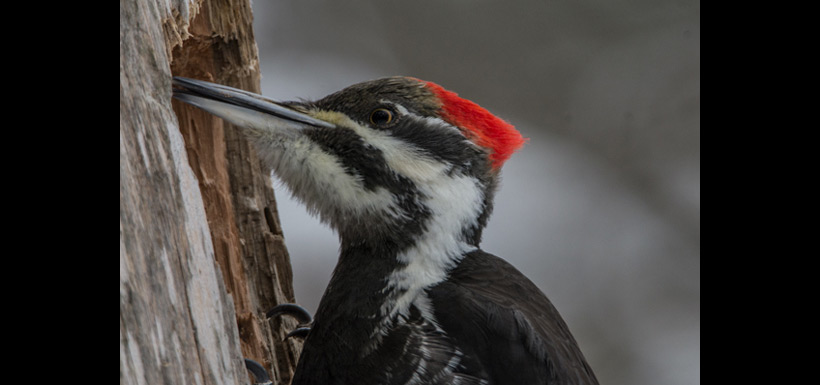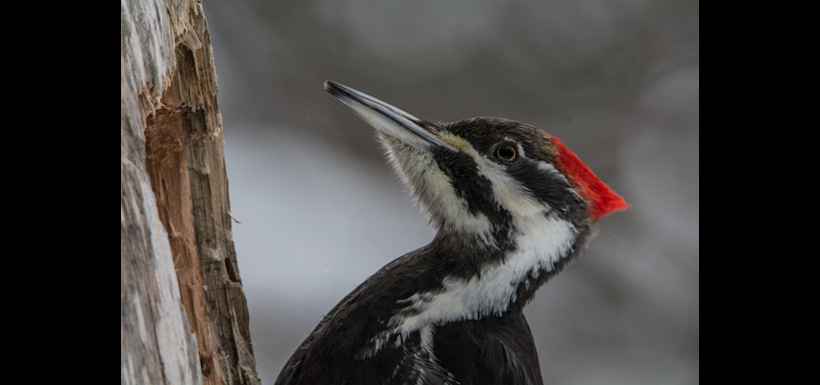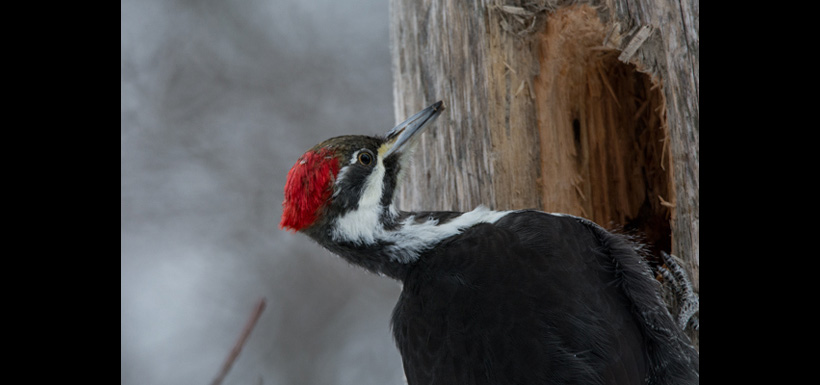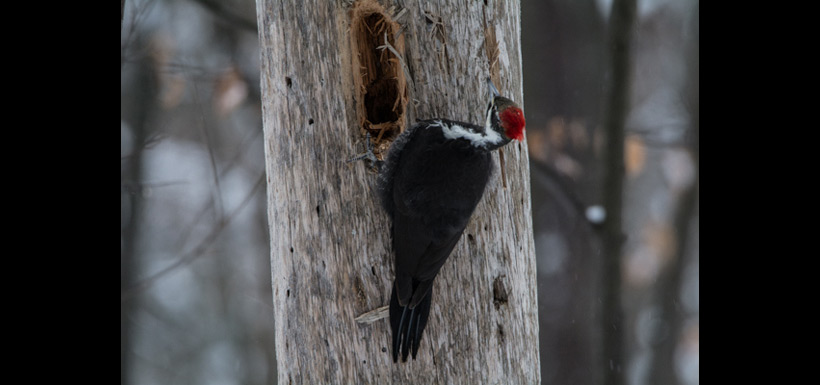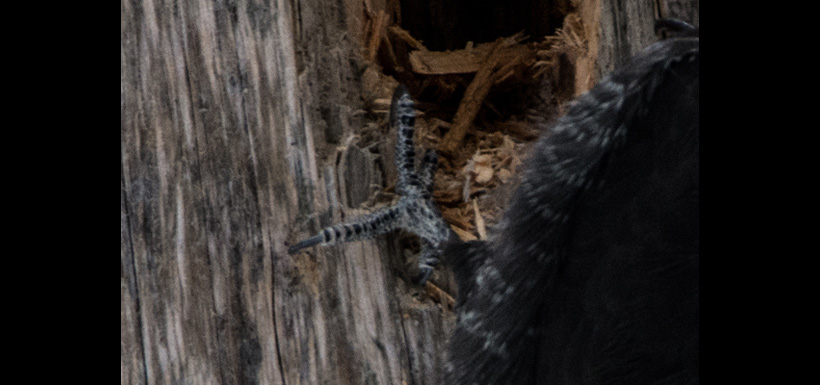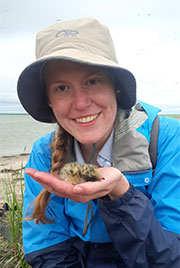Close encounters with a pileated woodpecker
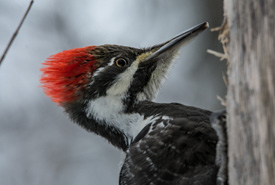
Pileated woodpecker female foraging on a dead stand. (Photo by Claire Elliott)
When I’m feeling unmotivated to go for a hike, I usually try to suppress those feelings and go anyway. I never regret the time I spend outdoors, and again that was the case this past weekend. I was sitting restlessly at my desk, which was buried under a pile of papers, and bemoaning the snowy, windy weather. The conditions were not great for birding, but I decided to head outdoors regardless. After a long, awkward bus journey, I arrived at my favourite green space within Ottawa: the Brittannia Conservation Area, otherwise known as Mud Lake.
I’m glad I took the time out of my day, because I had my closest encounter to date with a pileated woodpecker.
The pileated woodpecker is a crow-sized member of the family Picidae. It is the largest woodpecker in North America, except for perhaps the ivory-billed woodpecker — which was thought to be extinct before some recent sightings called that assumption into question.
This particular bird was so intent on excavating food from a dead stand, it let me closely observe for about 10 minutes. In that time, I was able to survey the bird’s features and behaviour. I could immediately tell that this bird was female, due to her red crest not extending all the way down her forehead to the base of her bill and lack of red malar (moustache) stripe, as seen on a male.
During her foraging, her reinforced retrices (tail feathers) were on display. Woodpeckers use these feathers to prop themselves up as they hammer. I also caught a glimpse of her zygodactyl toe arrangement (two forward, two back), another feature that helps woodpeckers cling to trees. The hole she was excavating had the typical rectangular shape that is attributed to pileated woodpeckers. I’m not sure why the rectangular shape is used. Perhaps it is the most energy-efficient shape to carve due to the grain of the wood.
In all likelihood she was creating this hole to forage for hibernating carpenter ants, an abundant winter food source. The pileated woodpecker is an enchanting bird, and this encounter will keep me heading out to the woods in all sorts of winter weather.
Click to expand the images in this photo gallery.
This blog is reposted with permission from Claire Elliott's blog: A Walk Through the Woods.

